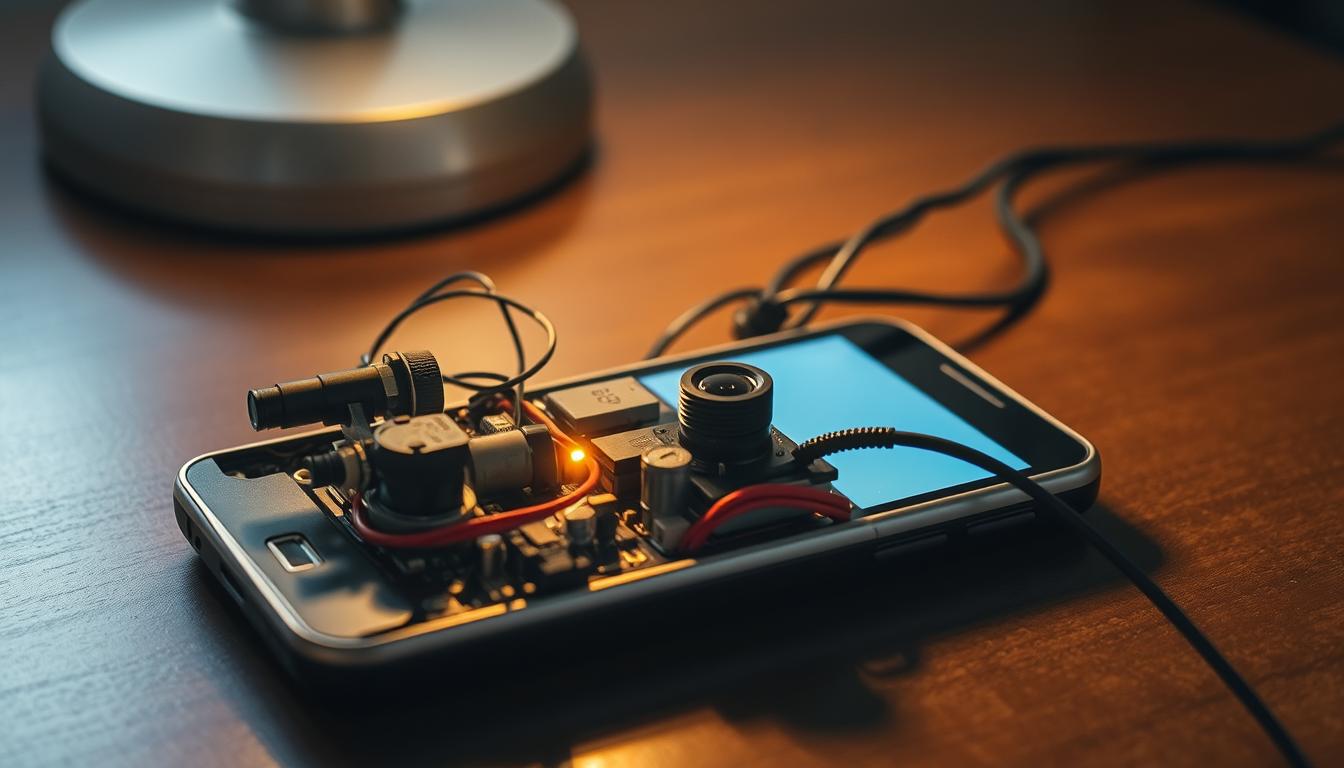Transferring Data to a New Phone: A Step-by-Step Guide
In today's fast world, our smartphones are key for staying in touch, organized, and entertained. Upgrading or switching phones can seem daunting, but it doesn't have to be. This guide will walk you through how to move all your data to a new phone safely.
With the right steps, transferring your data can be easy. This way, your precious memories and vital info will safely move to your new device.
Key Takeaways
- Understanding the importance of data transfer is crucial for a smooth transition.
- Choosing the right method for mobile data transfer can save time and effort.
- Preparing your old phone ensures a safe transfer of all important data.
- Setting up your new phone correctly streamlines the migration process.
- Implementing best practices enhances secure data migration and protects against loss.
Understanding the Need for Data Transfer
We all have a lot of digital stuff, like contacts and photos. Losing this data is scary. That's why data transfer is so important.
It keeps our important info safe when we get new devices. This way, we can keep living our lives without a hitch. Upgrading phones means we need to back up our data even more.
Good data transfer makes our phones better to use. It lets us enjoy our new devices fully. Studies show that people use their phones more when their data is safe.
Choosing the Right Method for Data Migration
Choosing the right method to transfer data to a new phone is key. Knowing the different ways to transfer data ensures a smooth move. We can pick from apps made by phone makers, cloud services, or third-party tools. Each has its own benefits, fitting our needs.
Using Manufacturer-Specific Apps
Apps like Samsung Smart Switch and Apple’s Move to iOS make transferring data easy. They help us move contacts, photos, and messages quickly. These apps use special features that work best with our devices.
Leveraging Cloud Services
Cloud services like Google Drive and iCloud are great for backing up and restoring data. They let us access our data from anywhere, making it easy to move files to our new phone. We can keep important stuff like documents and photos safe in the cloud.
Utilizing Third-Party Tools
Third-party tools, like MobileTrans, offer flexibility. They let us transfer data between different phones and operating systems. Exploring these options helps us find the best way to move our data.
How to Transfer All Your Data to a New Phone Safely
To transfer your data safely, start by making sure both phones are fully charged. Also, connect them to a stable network. This step is key to avoid any issues during the transfer.
Using secure methods to move your data is vital. Direct cables or trusted wireless options are best. They help keep your personal info safe.
Adding encryption is another smart move. You can use apps or your phone's built-in features. This extra step keeps your data secure as it moves to the new phone.
Preparing Your Old Phone for Data Transfer
When we plan to move data to a new phone, preparation is key. First, we need to back up our mobile data. This protects our important files and prevents loss during the switch. Using cloud services like Google Drive or iCloud, or backing up locally, helps us feel secure.
Backing Up Important Data
Preparing our old phone means focusing on backing up key data. This includes contacts, messages, photos, documents, and app data. By doing this, we make sure nothing essential is left behind when we switch to a new device.
Clearing Unnecessary Files
Clearing out old files is also crucial. Removing apps, media, and other unnecessary items makes the transfer easier. It also boosts our old device's performance. We can use built-in tools or apps to manage storage, keeping our important data safe and organized.
Setting Up Your New Phone
Now that we've prepared our old phone, it's time to set up our new one. We'll pick our language, connect to Wi-Fi, and create or sign into our accounts. This step is key for using our new device smoothly, whether it's Google, Apple, or another account.
This setup phase is crucial for transferring data and personalizing our device. We can organize apps, set display preferences, and choose privacy settings. Each choice we make helps us get the most out of our new phone, making the transition smooth.
Step-by-Step Data Transfer Process
First, we connect to a secure Wi-Fi network. This step is key for a smooth data transfer. It lets us move bigger files without any hiccups. Make sure your Wi-Fi is stable for a better experience.
Connecting to Wi-Fi
Connecting to Wi-Fi helps us share data between devices. We can move photos, contacts, and more easily. Go to your new phone's settings, pick Wi-Fi, and connect to your network to begin.
Initiating Data Transfer
Once connected, we start the transfer. We might use an app, cloud service, or third-party tool. Just follow the prompts to pick all your data. This way, you won't miss anything important.
Best Practices for Secure Data Migration
When we move data, following best practices is key to keeping it safe. Making sure our devices are secure is a big part of this. We can protect our devices with face recognition or PIN codes after moving data.
Ensuring Device Security
Keeping our devices safe makes us feel better and protects our data. It's important to turn on security features after moving data. Options like fingerprint sensors or facial recognition help keep our devices safe from hackers.
Checking Data Integrity Post-Transfer
After moving data, checking it for accuracy is crucial. We need to make sure all files and apps are working right. Finding problems early helps us fix them or move data again if needed. This way, we can have a successful data migration.
Data Transfer Tips for Smooth Migration
Migrating our data can be smooth if we make the right choices. Knowing when to transfer our data is key. It can make our migration go much better.
Timing Your Transfer
Timing is everything when moving our data. We should do it during off-peak hours. This means when there's less network traffic.
This approach helps avoid interruptions. It makes the transfer process more efficient. Planning for these times can prevent delays and frustration.
Common Issues and Solutions
Even with careful planning, issues can still happen. Disruptions in connectivity are common. But, knowing how to solve these problems can help a lot.
Learning to troubleshoot transfer issues is important. This includes using support resources or guides. Being ready for these problems ensures a smooth migration.
Conclusion
Moving our data to a new phone needs careful planning. We must understand how to transfer our data safely. There are many ways to do this, each with its own benefits.
Whether we use apps from the phone maker, cloud services, or third-party tools, each method has its own strengths. They help us meet our specific needs.
This guide has shared key tips for a smooth data transfer. It's all about keeping our devices and data safe. By following these steps, we make sure our data is secure and easy to find on our new phone.
With the right steps, moving to a new phone can be easy. Knowing we've protected our data makes using new technology a pleasure.
.jpg)














































